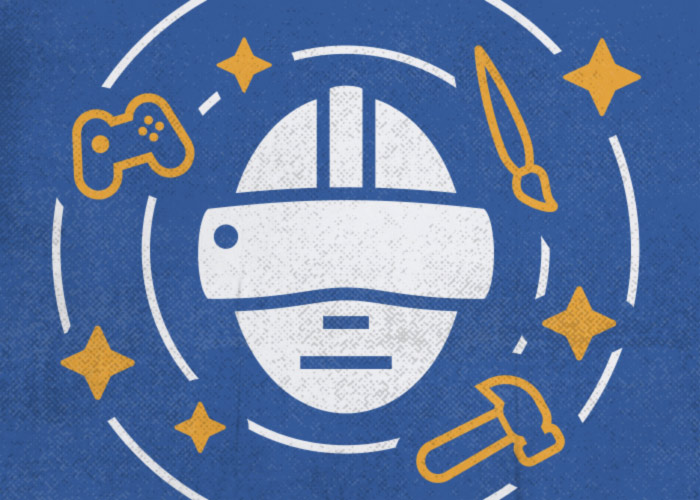Gaming Sector

First and foremost, the Metaverse is certainly associated with the gaming space. After all, games have become the basis for most modern Metaverses.
Gaming Metaverses constitute an economic system. Their main difference from traditional online games is that such projects are based on blockchain, where in-game characters and items can be non-fungible tokens (NFT), and projects have their own native tokens.
Gaming Metaverses can be:
- Chargeable, where players must purchase a character starter kit or, for example, a plot of land in virtual space in order to start playing.
- Free, where players are given a starter kit to play with upon registration.
Depending on the genre, gaming Metaverses can be divided into:
- classic simulators (CryptoKitties);
- simulators with PVP mechanics (Axie Infinity);
- card games (Gods Unchained);
- open world games (Star Atlas);
- RPGs (DeFi Kingdoms).
According to the study, the gaming Metaverses market could grow by 20% annually over the next six years. Its cap has already exceeded $800 million, and analysts predict the market will reach $3 billion by 2028.
Education

In recent years, the idea of education in virtual space has gained incredible momentum, primarily due to the COVID-19 pandemic and global quarantine.
Innovations in this area involve school education, university specialty courses, and highly specialized education. Research carried out by Fortune Business Insights estimated the global higher education technology market at about $85 billion in 2021, with analysts predicting that its capitalization could grow to $170 billion by 2028.
Last fall, Mark Zuckerberg announced that the company would allocate $150 million for Meta Immersive Learning. The project will create ten Metaversities linked to real-world educational institutions in the United States. Over the past year, about 400 students have already been able to take a test course in virtual space through this program.
As for school education, the world’s first virtual school for elementary students is already operating in Florida, USA. The Optima Classical Academy is free, and it’s attended by about 1,300 students. Lessons take place entirely in virtual space.
Learning in the Metaverse opens up possibilities for exchanging the professional experience of different specialists. For example, Ukrainian IT specialists have developed a special Metaverse-based platform for delivering interactive online courses in data analysis, machine learning, and programming. Moreover, graduate students at a Japanese university will launch a specialized Metaverse course to train blockchain specialists. There are more and more such examples every day.
The idea of immersive learning in virtual space has several undeniable advantages:
- No limits. For instance, Metaverse technologies allow you to conduct risky experiments that could lead to undesirable consequences in the real world.
- Safety. Learning in virtual space makes it possible to limit the negative factors impacting the educational process. For example, you can exclude disciplinary violations, bullying, or the possibility of shooting in an educational institution.
- Attractiveness. Metaverse technologies help teachers present educational material in a non-standard way, which makes the virtual reality learning process more appealing to students.
- Flexibility. Education in virtual reality allows the issue of overcrowded classrooms or keeping up with them during quarantine restrictions to be solved.
However, education in virtual environments also has its disadvantages. The main drawback of such projects is their lack of accessibility. After all, virtual learning requires VR equipment at the very least, which can be more expensive than offline educational courses.
Tourism

The global tourism industry has been steeply declining for the last few years amidst the COVID-19 pandemic. Due to the decline in the popularity of traditional tourism, its digitalization has become an active part of the industry.
Virtual traveling offers an opportunity to visit world-famous sights, look into distant corners of the world, and sometimes “walk the streets of the past.” For instance, you can visit a Metaverse, which reconstructs the life and realities of the city of Cologne in 1926.
Tourist Metaverses also solve the problem of limiting the number of visitors. A VR exhibition organized by World Heritage Exhibitions allows you to visit the ruins of Machu Picchu in virtual reality while seeing the site in person is almost impossible because of restrictions imposed by the Peruvian government to protect the ancient city from destruction. Similarly, the Metaverse will deal with the problems of the Vatican Museums as well. The exhibits will soon be available in virtual space developed by Sensorium, while queues for a real visit should be booked months in advance.
The development of Metaverse technologies has provided some owners of historically valuable buildings with additional funding for maintaining cultural monuments. Digital analogs of their properties can be visited in the Metaverse after paying a token amount of money. Virtual tourists can look into any room of the castle and contribute to the upkeep of the real building without leaving home.
Some countries have gone further. Soon virtual tourists will be able to visit not only individual historical sites or museums but entire cities and regions in Metaverses. The primacy in this area belongs to the UAE. The first cities, copies of which will soon be accessible to visitors in Metaverses, will be Dubai, Abu Dhabi, and Sharjah. A similar program exists in Seoul.
Notably, virtual tours don’t threaten the traditional tourism industry at all. In fact, it fuels interest in traveling. So, walking in virtual space increases the desire to visit the place in reality.
Workspace

Metaverse technologies make it easier to increase the productivity of the work process. For example, programmer, Paul Tomlinson, shared his experience organizing his workspace in virtual reality. He said that the Metaverse allows him to work every day in a new place: the virtual office, gardens accompanied by birdsong, the shore of the ocean, or even near-Earth orbit. With the Metaverse, the programmer has organized his workspace without changing anything in the real world. Tomlinson’s home office in real life consists of a comfortable chair, VR equipment, a computer mouse, and a keyboard, however, the virtual office has a lot of monitors and different spreadsheets.
In addition, virtual space provides opportunities for employees to work together remotely. For example, Meta presented an innovative service called Horizon Workrooms to the public last summer. It was one of the first programs for organizing virtual offices in the Metaverse for co-working. There are now quite a few such services in virtual space.
Another curious example of using a virtual environment for collaboration is the experience of the German illustrator, Viviane Schwartz’s, team. Schwartz used the virtual space of the computer game Red Dead Redemption 2 for an online meeting with her colleagues. Instead of a traditional meeting via Zoom, the team held the conference in the virtual world of the Wild West, gathered around a campfire.
Research showed that employees from various fields in the United States, the UK, Brazil, Singapore, China, and Japan are willing to move their workplace to the Metaverse. About half of them claim that working in digital reality improves their productivity.
Another study proves that using a virtual space can strengthen trust between colleagues. Vice Media Group, a media company, created Viceverse, a creative space in the Metaverse, for virtual meetings among its employees. The company’s HR managers argue that the virtual platform has eliminated the need for team building. Following the same logic, the heads of the American company, Fantasy, held a New Year’s corporate party for their employees in the AltspaceVR Metaverse.
Public Events

Virtual reality has also become a venue for various public events. Violinist, Lindsey Stirling, was a pioneer in this area, with her August 2019 concert held in a virtual environment specially created for this purpose.
The next VR concert was given by DJ Marshmello, but this time the event took place on Fortnite. A year later, due to quarantine restrictions, rapper Travis Scott decided to move his concert to Fortnite. Not long after, famous performers such as Ariana Grande, Dominic Fike, Tones and I, and many others held concerts there.
Later, artists began to use Sandbox, Roblox, Decentraland, and Otherside to hold various public events. These Metaverses hosted concerts by Justin Bieber, Eminem, Snoop Dogg, Jennifer Lopez, DJ David Guetta, and other popular artists. American TV channel MTV has created a virtual platform The VMA Experience in Roblox, where users can earn tokens and spend them by voting for their favorite artist in the Moon Person category (best virtual concert).
Metaverses hosts other massive events like:
- exhibitions;
- conferences;
- festivals;
- award ceremonies;
- product presentations.
For example, the International Table Tennis Federation (ITTF) plans to conduct more than 50 World Table Tennis events each year in the Metaverse.
Marketing Platforms

For the last several years, virtual space has been successfully used for brand management, and world-known companies have opened their representations in the Metaverse.
There are some beneficial features of using Metaverse technologies in marketing activities:
- direct contact with the target audience;
- increased brand awareness;
- visualization;
- digital sales;
- audience expansion;
- creating newsworthy content through innovation, etc.
The bulk of marketing platforms in virtual space offer users several options for interaction:
- participating in mini games with rewards such as in-game tokens, which can be used as a bonus to buy real things or services;
- selling and distributing NFTs, which can contain digital copies of real products or the right to receive certain privileges;
- using augmented reality technology in physical stores or offices.
Virtual space is already actively used for marketing purposes by:
- sports brands (Nike, Adidas, Puma);
- fashion houses (Gucci, D&G, Balenciaga, Hugo, Burberry);
- technology giants (Samsung, Apple);
- restaurant chains (McDonald’s, Domino’s);
- car brands (Hyundai, Honda, Mini);
- media giants (Netflix, ITV Studios), etc.
The use of Metaverse technologies in marketing strategies is actively growing. For example, Gordon Ramsay’s popular reality show, Hell’s Kitchen, is planned to be transferred to virtual space, and Playboy has already opened a digital mansion in the Metaverse for connoisseurs of “exclusive experiences.”
To summarize, we can confidently say that the possibilities of the Metaverse aren’t exhausted by the above examples. For instance, in some American states, it’s even possible to hold a virtual wedding ceremony in the Metaverse, which will be legally valid. So, the boundaries of using the digital world only exist nominally.
In our next part, we’ll talk about future professions, i.e., those specialists who are already in demand in the labor market due to the growing popularity of Metaverse technologies.










